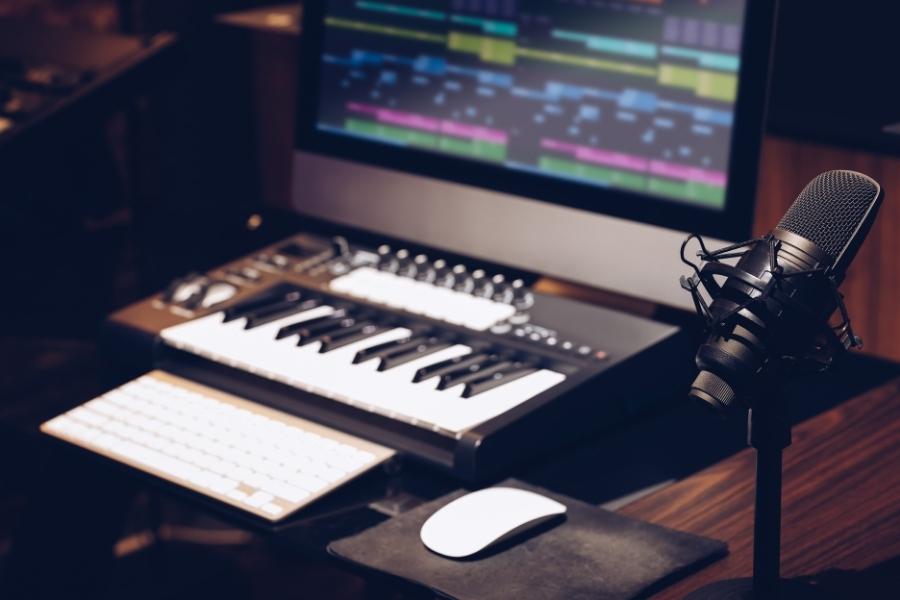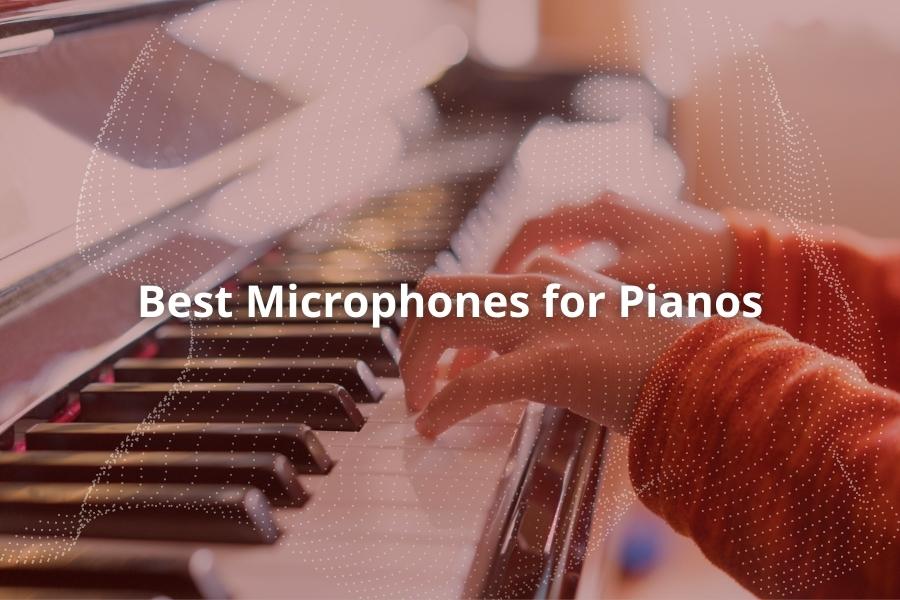The piano is notorious for being difficult to record. It’s the Bigfoot of musical instruments. You can make out what it is, but you just know it could be captured better.
A piano’s sound is complex and full of nuance, frequencies, and pitches. Not to mention where the sound is coming from is, well, big. Recording a piano is complex (recording in general is too!), so the tools and methods you use to capture the sound as you intend have to be created with that in mind. It’s a demanding venture, but so worth it when you finally listen to what you’ve recorded and say, that’s IT!
What Type of Microphone Is Better for Recording Piano?
As with every bit of music gear, the answer depends on the sound you’re after. Dynamic microphones are thought to be second best to condenser microphones when it comes to recording piano, but this isn’t always the case. It’s true that condenser mics are known for catching a wider range of frequencies, but engineering the sound from a dynamic mic will make up for that. The two types also play well together.
Set up a pair of condenser mics above the keys to get a more natural sound, or use a room condenser in combination with a closed-miked dynamic to really get the full range. Want to use a dynamic mic alone? Introduce a bit of EQ into the mix and you’ll be able to draw out those mid and high range frequencies to create a richer sound. You’ll capture the robustness of the piano as well as all those little articulate details.
What to Keep in Mind When Choosing a Microphone for Piano Recording
Choosing the right mic is more than deciding between dynamic or condenser. There are a few other important elements, especially when it comes to recording the piano.
Polar Pattern
The direction a mic is designed to pick up sound from is its polar pattern, or pickup pattern. Choosing the polar pattern that’s right for the environment you’re recording in is important if you want to block some sounds while picking up others. If you want to capture sound from only one side of the mic, you’ll choose one with a cardioid polar pattern. On the total opposite side of the pattern spectrum is an omnidirectional mic, which will pick up 360 degrees of sound.
When you’re looking to pick up sound from a piano, you’ll have to consider how well a microphone will pick up off-axis sound specifically.
Frequency Response
Pianos produce a wide range of frequencies, so a mic that is capable of picking up those frequencies is best. Of course, this means condenser mics. But again, you can assist your dynamic mics by introducing EQ.
Proximity Effect
When you move a mic closer to the source of sound, this produces a richer bass response, otherwise known as the proximity effect. Omnidirectional mics are great at managing what could result in a boomy sound when you want to close mic your instrument.

On to the Good Stuff
We’ve covered the mic basics, so let’s get into why you’re here and compare the best mics for piano recording.
Rode NT1-A $200
The Rode NT1-A is a best-seller and perfect for home studios, not only for its price but for its high sensitivity and low noise. It’s not as versatile in the studio but does have great roll-off, making it not overly bright while enhancing your upper range frequencies, which cuts down your post-production time.
Pros: The Rode NT1-A is quiet and responsive and a great investment for home studios. The Integrated shock mount and pop shield is a good design. The noise on this mic is almost non-existent, which is surprising for the price.
Cons: If you’re looking to use this mic for vocals as well, you’ll need a pop-filter to reduce sibilance. The body is pretty heavy due to an all-metal body but its shock mount should hold up.
Specs:
- Condenser Microphone
- Cardioid Polar Pattern
- Max SPL: 137dB SPL.
- Self Noise: 5dB A weighted.
Shure SM7B $400
The Shure SM7B is a solid dynamic microphone for close miking a piano for a robust sound and is one of the most well-known mics in the industry. (The first iteration came onto the scene in Michael Jackson’s Thriller video!)
The frequency range this mic picks up due to its large diaphragm, not to mention the unwanted noise it doesn’t, makes it great for mixing. Use the Shure SM7B to compliment a condenser mic to create a more natural sound.
Pros: Leaves out background noise while not creating its own for clear recordings. It’s useful for other applications, like voice. The Shure SM7B has a sturdy construction for durability.
Cons: It’s a professional mic with a professional-grade price tag. You’ll likely need an external preamp to drive the Shure SM7B for clean gain.
Specs:
- Dynamic Microphone
- Cardioid Polar Pattern
- XLR Connection
- Max SPL: 180dB
- Self Noise: 22dB
Shure SM81 $450 (comes with a mic stand and cable)
This studio staple is versatile, durable, and has been used in thousands and thousands of recordings. It’s used to record a wide variety of instruments, including pianos, for its frequency response, low noise, and low RF susceptibility. The Shure SM81 delivers high-quality condenser tech with a cardioid polar pattern.
The construction of this mic is so durable, it’s the only one on this list to dare claim that it withstands humidity and other conditions.
Pros: The middle-of-the-road price plus its performance plus its durability equals an impeccable piece of equipment.
Cons: None. Really.
Specs:
- Condenser Microphone
- Cardioid Polar Pattern
- Max SPL: 146 dB
- Self Noise: 16dB A weighted
AKG C414 XLS $1,600 (but currently $960 on Amazon)
The AKG C414 XLS is a workhorse of a condenser microphone and another industry staple that has gone through multiple iterations while keeping the qualities professionals have loved from the beginning in 1971, from the Beatles to Portishead. It’s performance is impressive across vocal, guitars, drums, and pianos. This mic is sensitive enough to pick up a dynamic range, but also very low background noise.
With nine polar pattern choice settings, the possibilities are nearly endless, lending to its versatility. Also, its built-in bass filters will cut your mixing time.
Pros: The AKG C414 XLS is incredibly versatile and clean. It includes a sturdy metal case for protection during transport–something every condenser mic needs.
Cons: It’s another professional-grade microphone with a very hefty price tag, so it’s not a reasonable choice for the novice or hobbyist.
Specs:
- Condenser Microphone
- 9 Polar Patterns
- Bass-Cut Filters
- Max SPL: 140dB
- Self Noise: 88dB
- XLR Connection
Our Top Choice Microphone for a Piano
It’s probably pretty clear: the Shure SM81 is the winner here. And honestly, not just for piano recording, but for almost any other instrument in your studio. It’s the perfect combination of great sound and a decent price. Even without the reasonable price tag, the Shure SM81 beats competitors in performance and quality three times its cost. Do yourself (and friends!) a favor and invest in this microphone.


